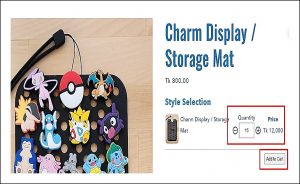
Regarding hyper-segmentation, 42% of marketers engage in the practice of segmenting to reach their target audience, and a lower percentage of businesspeople utilize multiple data sources to do that.
Customer segmentation is an important part of any good business plan because it helps companies learn more about their customers and their specific needs. By separating their target markets into different groups, companies can improve their marketing and sales, make customers happier and more loyal, and take over their industries.
This article will review the fundamentals of client segmentation and the various approaches companies can take to this process. We will also offer advice on effective B2B segmentation strategies and examine how data analytics and technology have changed the game in recent years.
Top B2B Segmentation Strategies
A strong customer segmentation strategy helps marketers accurately depict and categorize their target audience based on shared characteristics. Conversion can be directly earned from a successful customer segmentation. In the case of a B2B business, customer segmentation is more important because customer retention is quite tricky in a B2B business.
A study conducted by touch point found that B2B organizations can see a 25-95% boost in earnings with just a 5% improvement in customer retention.
To get better results, attempting different customer segmentation approaches is vital because One approach to consumer segmentation may work better than another, depending on the goods and services you’re promoting.
Here, we have listed the most popular segmentation techniques used by B2B marketers.
Strategy 1- Client Segmentation by Firmographics
B2C marketers utilize demographic data, and business-to-business marketers use firmographics to divide their target audience into subsets defined by commonalities.
organizations can be categorized into different groups using firmographic segmentation according to various criteria, such as their size (measured in employees or yearly revenue), location, industry, and other technologies utilized by the targeted organizations.
The low entry barrier of data collection and segmentation made firmographics popular among marketers. In addition, salespeople can readily adapt firmographics to their target audience. Marketers simply need to describe a specific consumer category and relay this information to sales.
As a B2B marketer, you should never assume anything. You can’t presume that all businesses launched within the last three years require the same software or that new ventures don’t have the capital to invest in substantial machinery. Using firmographics to generalize about your consumer categories is a risky business.
Ultimately, marketing initiatives aimed at the top of the funnel are the most effective ones that use firmographic segmentation. Although companies are all different, and it’s dangerous to generalize from firmographic data, issues that affect organizations of comparable size, region, or industry tend to recur.
Consequently, when targeting clients based on their firmographic characteristics, it is most effective to run campaigns that aim to increase brand recognition and attract prospective leads into your pipeline by presenting credible thought leadership content (such as blogs, webinars, videos, or podcasts).
Strategy 2- Classifying Customers into Different Tiers
Tiering customers is a way to divide them into different groups according to how well they fit your company’s objectives. Customer tiering allows you to divide your clientele into other groups according to factors like the amount of money they’re likely to spend with you throughout your partnership or how well their buying habits align with your own marketing and sales goals.
This segmentation method is innovative since it prioritizes leads and customers according to the value they can provide. A new approach to tiered segmentation, called account-based marketing, has emerged in recent years. This tactic involves narrowing your marketing and sales efforts to a select group of accounts you think will provide the most return on investment.
With account-based marketing, the sales and marketing teams work together to maximize the potential return from a select group of accounts rather than using big data and marketing automation to scale campaigns across a large pool of leads.
Tiered customer segmentation is something that demand-generation marketers have seen as a possible asset when interacting with your current clientele. Marketing has always centered on generating leads, but smart teams use big data to determine their current customers’ worth. Using tiered segmentation, demand-generation marketers can separate existing customers into several groups according to their lifetime value.
Similar to firmographic customer segmentation, one possible drawback is that you can not assume all consumers in a given tier have the same wants. Therefore, crafting a marketing message that fits any level could be challenging.
Strategy 3 – Customer Segmentation According To Needs
Do you have to spend the least amount of money on a certain consumer segment? Maybe what this market needs is a product with superior durability or cutting-edge capabilities. Customers can be categorized into different groups based on their product preferences using needs-based customer segmentation.
Customers’ needs are used to segment this model. This segmentation strategy provides the marketer with the most precise means of targeting specific groups of customers. The marketer has the freedom to choose as many needs-based categories as they choose, making it highly scalable.
A good place to start when thinking about needs-based segmentation is by considering what attracts potential customers to your organization. As a cloud service providers, you might find out that a potential customer needs a solution that streamlines file sharing if they visit your site via a blog article about the topic. Consequently, you may send that lead to more information related to that idea in an effort to move them further down your sales funnel.
The problem is that it is not always easy to pin down exactly what consumers want. Communicating with the sales representatives who will be interacting with each client segment is another challenge for marketing.
Strategy 4- Client Segmentation according to Customer Complexity
Client sophistication-based segmentation is exactly what it sounds like: splitting your target audience into subsets defined by their level of product or industry knowledge. Segmenting customers based on their level of sophistication allows you to personalize your campaigns to each lead’s unique requirements, just like the other strategies discussed in this piece.
However, customer sophistication does not divide clients according to their demands, firmographic information, or prospective worth to your organization; rather, it focuses solely on the target company’s awareness of the problem your product solves.
Continuing with the cloud provider analogy, a clueless lead may be one that insists on maintaining paper copies of all documents in filing cabinets. It might also be a young company that hasn’t dealt with the enormous storage complexity of running a tech business just yet.
Alternatively, a highly-informed prospective client can use cloud services even through your big rival. Since your intelligent lead is already aware of the necessity of cloud service providers for businesses, you shouldn’t aim to explain this to them in your contact. Your primary objective should be highlighting how your services differ from their present provider.
Just like with the other approaches, marketers risk assuming too much about their customers’ level of sophistication. Your top-of-the-funnel product explanations could be boring and even frustrating to a new startup that knows exactly what cloud service provider they need.
Similarly, a seemingly well-informed client might be utilizing a CSP, but they have yet to learn what would transpire if the service were removed.
Read this about to know about B2B customer segmentation.
Strategy 5- Customer Behavior-Based Segmentation
Marketers who focus on demand generation and want to maximize the value of their present customer base might benefit significantly from behavioral segmentation. Marketers track how customer tiers interact with their product or service to prevent customer churn. This helps them uncover upsell chances for customers who could benefit from increasing their usage and churn risks for customers who aren’t happy.
Marketers may better target their campaigns by classifying customers according to their demands and usage patterns. Upsell offers to higher tiers or premium features can be used to target promising clients and add value. At the same time, they may listen to clients on the verge of leaving and fix whatever problems they’re having so that they stay.
This tiered method allows marketers to boost growth and improve overall customer lifetime value by nurturing top customers based on customer behaviour. This is achieved by tailored recommendations and interventions as needed. The outcomes are a stronger bond with clients, faster spending increase, and better conversion of target buyer profiles.
Offer a Third-Party App to Your Segmented Customer- See why?
Customers’ firmographics, demographics, technographics, and market trends can be better profiled and segmented with the help of third-party apps instead than solely relying on internal data.
If your research and customer data show that a particular segment of customers has a strong interest or need that could be met by integrating a third-party app, this presents an opportunity.
Offering the integration of an app purpose-built to serve that specific customer segment can improve satisfaction, engagement, and loyalty for those target customers. It shows them that you understand their needs and are providing customized solutions just for them.
Different third-party apps are available for eCommerce businesses that will help B2B businesses do market and customer segmentation. Providing a third-party bulk order app for Shopify is a good way for business-to-business sellers to target B2B buyers because they already segment specific customers who prefer bulk buying.
After offering a bulk order app, a business person can narrow down more segments like attitudinal segmentation, Behavioral customer segmentation, geographic segmentation etc.
At Shopify, there are several apps, and here you can see the interface of a bulk order app for Shopify-

Here, we can see the interface of a bulk order app that allows customers to buy mats in bulk. Through this app, a B2B wholesaler can offer extra perks to B2B customers compared to the B2C one. For B2C, he can make different segments. Read here to know about different business model.
Not only a bulk order app, you can make different segments according to the business types of your customers.
For example, according to Onlinedasher, There was an uptick in sales leads for 24% of email marketers who segmented their lists.
Bottom Line
Customer segmentation is essential in today’s competitive business climate. A potent tool for targeted marketing, tailored experiences, and, eventually, better customer satisfaction and bottom-line growth can be yours when you divide your audience into groups based on shared traits, behaviors, and demands.
58% of marketers are missing out on segmentation’s benefits because of this. Your company will reach new heights once you embrace segmentation and its data-driven power.
